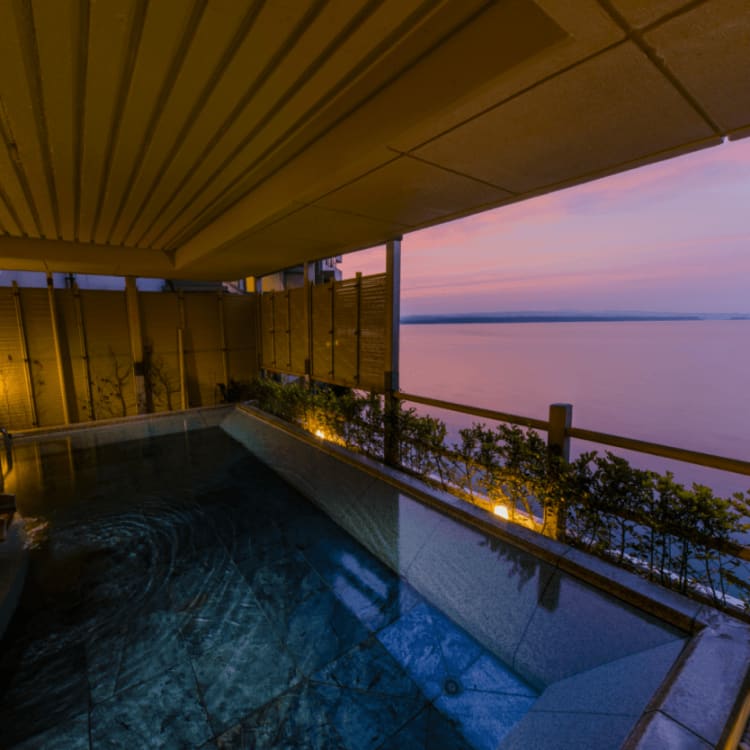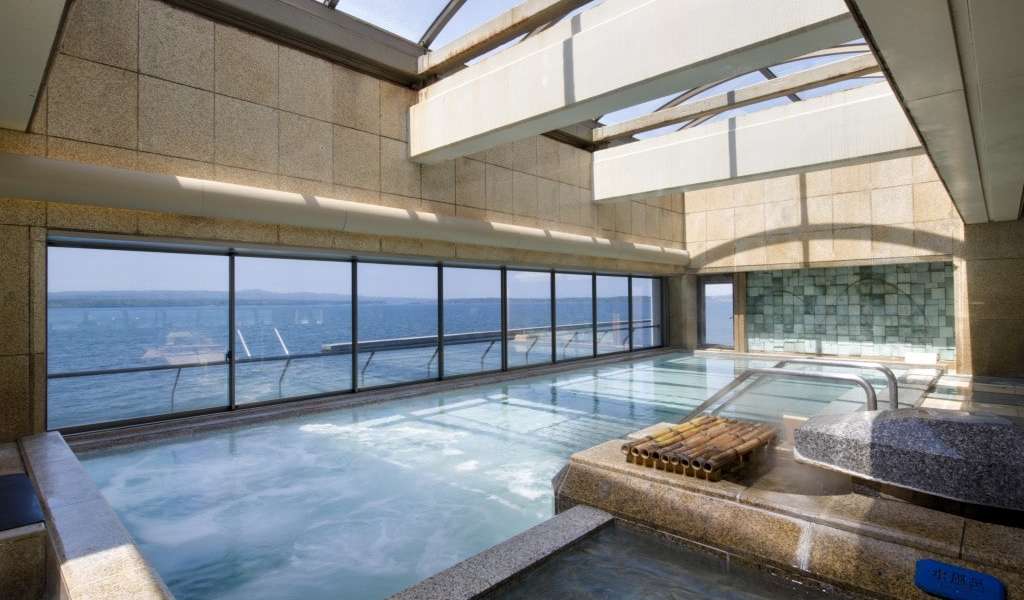
An Insider’s Guide to Kagaya Ryokan Go behind the scenes of an award-winning 100-year-old ryokan
When travelling in Japan, a stay in a traditional Japanese inn – known as a ryokan – is an absolute must, and the best way to experience the full gamut of Japanese 'omotenashi' hospitality. More than just a place to rest, a ryokan is a facility dedicated to relaxation, wellness and culinary exploration; think world-class fine dining, onsen (natural hot springs) and minimalistic interior design. Forget five-star hotels, a stay at a ryokan is a rich cultural experience in itself.
To learn more about the best way to enjoy a ryokan stay, as well as the meticulous planning, training, and careful eye for detail that goes into every single aspect of the ryokan experience, we spoke with Hiro Amano of the award-winning Kagaya Ryokan . Located in the picturesque town of Wakura Onsen in Ishikawa Prefecture, the over 100-year-old Kagaya Ryokan is one of Japan's most respected and loved ryokan establishments.

Kagaya Ryokan lobby
What are the key differences between ryokan and hotels?
The culinary focus is the most significant difference between a hotel and a ryokan. Enjoying long, leisurely, carefully crafted kaiseki (multi-course) meals is one of the pleasures of staying at a ryokan and an important element that adds to the unique appeal of each ryokan.
At Kagaya, we offer kaiseki meals made with local ingredients and depending on the room type, they can be enjoyed in room. Serving dinner in the rooms also gives guests the opportunity to have a private dining experience, which is a significant benefit especially in a post-covid world where the demand for this traditional in-room dining is on the rise.

Kaiseki meal
You’ve placed first in the ‘Top 100 Hotels and Ryokans Voted by Industry Professionals Rankings’ multiple times. What do you think sets Kagaya apart and how does one evaluate a ryokan?
Our motto is ‘work hard with a smile’. We strive to create an environment where our guests can relax, escape the fatigue and stresses that build up during our daily lives and enjoy an extraordinary experience.
We’re always thinking about how to improve the quality of our hospitality and conduct regular training for our room attendants and staff. At the same time, we constantly strive for improvement, using the questionnaires and feedback from our guests to adapt our services as necessary.
Our services are evaluated in four categories: 1) hospitality, 2) facilities, 3) cuisine and 4) planning. Our ultimate goal is to have our guests check out at the end of their visit, thinking, ‘I can’t wait to come back’.

Kagaya Ryokan guest room
How would you describe the perfect way to enjoy a stay at a ryokan like Kagaya?
I think it is a good idea to allow plenty of time to relax. Since Kagaya is an onsen ryokan (hot spring inn), we recommend that you arrive at the inn by check-in time (3:00pm) so that you can enjoy the onsen baths before dinner. You can also shop at the ryokan’s stores, stroll around in yukata (a casual cotton kimono) and take part in the regular events and performances that we host.
Dinner is typically served around 6:30pm and being a multi-course kaiseki dinner, it takes about two hours to fully enjoy the experience. After dinner, you can watch a live show, have a shiatsu massage or take another bath in the onsen.
What can Australians expect from a stay at Kagaya?
Kagaya is a ryokan (a Japanese style inn), so you can experience all of the unique aspects Japanese lodging culture has to offer, including Japanese-style rooms, futon beds, yukata, kaiseki cuisine and onsen.
You can also learn about the local culture by viewing the many traditional crafts of Ishikawa Prefecture, like Kutani ware and Ohi ware ceramics, the fabric-dyeing technique known as Kaga yuzen, and Wajima lacquerware, all of which are on display in the inn. Our staff also run tours of our museum every day.
In recent years, there have been many international travellers booking a stay at Kagaya. We are working hard to better understand how best to introduce Japanese hospitality and culture to international guests through the daily interactions between guests and our staff.

Kagaya Ryokan indoor onsen
What are some key tips Aussies should know about onsen etiquette?
The main manners are to wash your body before getting into the bathtub and not put your towel in the water. Also, when washing your body in the bathroom, please be considerate of the people around you by not letting the hot water from the shower splash on them.
In recent years, even some of our Japanese guests don’t follow bathing etiquette to a tee, so rather than watching others, it’s best to know what to do before visiting. We have posted materials in various languages with illustrations to introduce bathing etiquette in the change rooms.
Recently, some facilities have started to allow people with tattoos, but this isn’t quite the norm just yet. If you have a large tattoo, it is better to check with the facility in advance whether it’s okay to enter the bath. At our ryokan, we ask people with small tattoos to wear a special adhesive tattoo cover before bathing.

Kenrokuen Garden
What are some must-sees or must-dos in Wakura/Kanazawa for international travellers?
The area has a unique personality that changes with each season, so what to do depends on when you’re visiting.
Ishikawa Prefecture was once known as ‘Kaga Hyakumangoku’ (hyakumangoku means 1,000,000 and koku is a measurement of rice production), meaning the area was essentially a place with an abundance of rice, which at that time meant wealth. It’s associated with the warlord Toshiie Maeda, making it home to many valuable historical sites, culture and art. The nearby cities and towns of Kaga, Kanazawa and Noto all have their own highlights.
The city of Kanazawa in particular, has historical facilities such as Kenrokuen Garden, Kanazawa Castle, Myoryuji, the Ninja Temple and modern museums such as the 21st Century Museum of Contemporary Art.
In the Noto Peninsula, where Wakura Onsen is located, you can enjoy meals that make the most of nature’s bounty, both from the sea and mountains. Much of the original landscape remains intact and is recognised as a Globally Important Agricultural Heritage System (GIAHS) and a place you can really feel the power of nature.
Noto Peninsula has a lot to offer, such as the Wajima Morning Market, Shirayone Senmaida rice terraces, the salt farm in Suzu and Ganmon Sea Caves which are all worth a visit. There’s no shortage of things to explore in this beautiful region; just ask us for tips, and we’re always happy to help.

Kanazawa Castle
How to Get Here
The easiest way to reach Kagaya Onsen is by public transport from Kanazawa City. Kanazawa is a 2.5-hour ride on the bullet train from Tokyo, 3 hours on the JR Special Express Shirasagi from Nagoya and around 2 hours, 40 minutes on the JR Special Express Thunderbird from Osaka. From Kanazawa, Kagaya is a short, 60-minute express train to Wakura Onsen Station where you can catch the 7-minute free shuttle bus to the ryokan.




























































